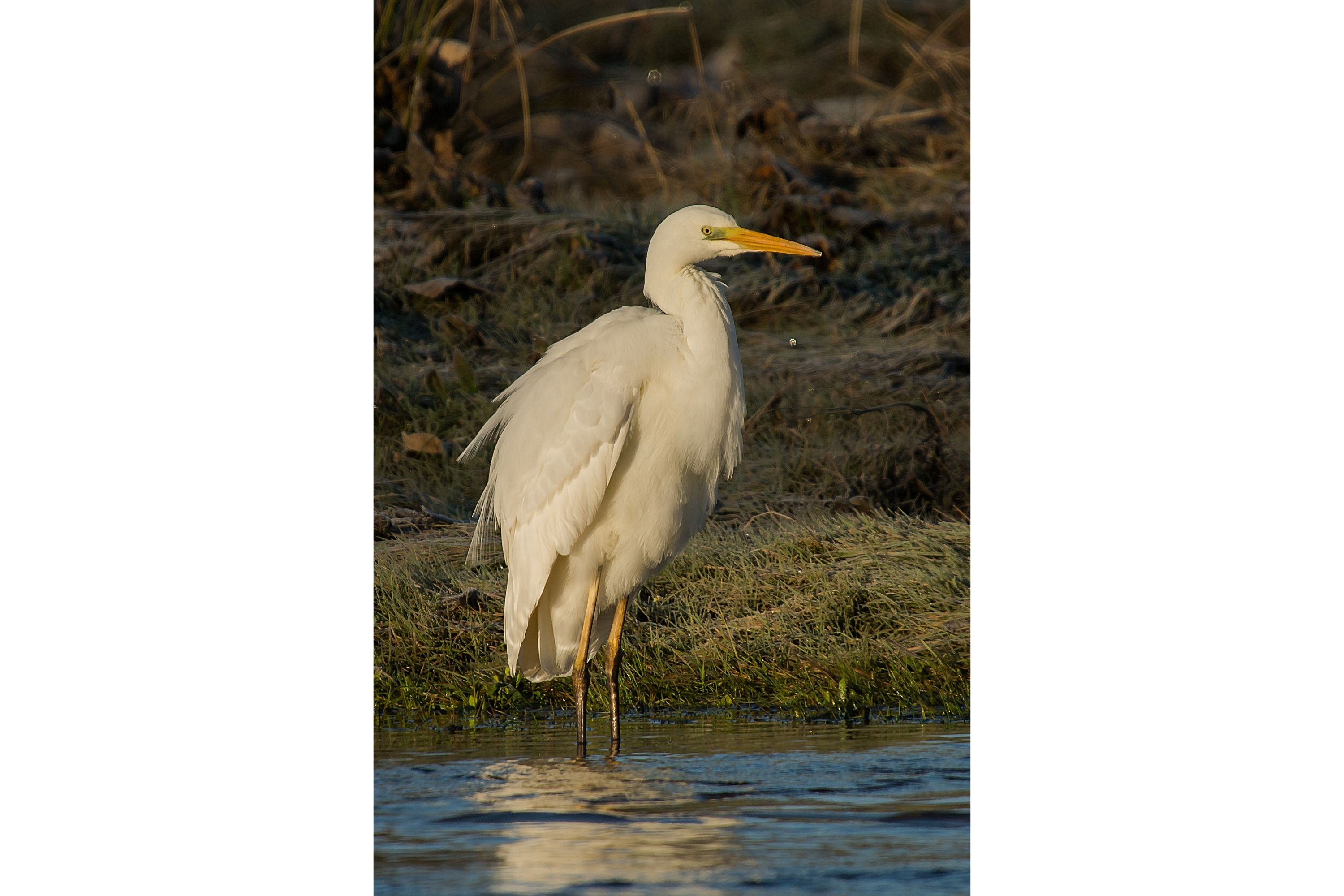Great egret
(Ardea alba)

Description
Ardea alba, commonly known as the great egret, is a majestic bird that belongs to the family Ardeidae, which includes other species such as herons, bitterns, and egrets. The great egret is distributed across most of the world's tropical and temperate regions and is known for its striking plumage, elegant form, and impressive size. In this article, we will explore the physical characteristics, habitat, behavior, and conservation status of the great egret. Physical Characteristics: The great egret is a large bird, standing approximately 3.3 to 3.7 feet (100 to 112 cm) tall and weighing 2.2 to 3.6 pounds (1 to 1.6 kg). It has a wingspan of 4.5 to 5.5 feet (140 to 170 cm), which allows it to soar gracefully over the water or marshes where it forages for food. Its long, slender legs are black, while its feet are yellow, and its beak is long and pointed, also black. The great egret's plumage is mostly white, with a long plume of feathers on its back that it raises during mating displays. During breeding season, it also develops a green facial patch and a pinkish hue around its bill. Habitat: The great egret is found in a variety of wetland habitats, including freshwater and saltwater marshes, swamps, and shallow lakes or ponds. It can also be found in estuaries and along coastlines, as well as in agricultural fields and other areas where there is standing water. The great egret is a highly adaptable bird and can be found in both urban and rural environments. Behavior: The great egret is a solitary bird that typically forages alone or in small groups. It is a patient hunter, waiting quietly for prey to come within striking distance before quickly snatching it with its sharp beak. Its diet consists primarily of fish, but it also eats amphibians, reptiles, small mammals, and insects. The great egret is also known to steal food from other birds, such as herons and ibises. During breeding season, which typically occurs between March and May in North America, the great egret engages in elaborate courtship displays. Males will strut around their chosen mate with their long plumes raised, while also vocalizing and offering nesting materials. Once the pair has bonded, they will build a nest together in a tree or bush near water, using sticks and other plant material. The female will lay 2-4 eggs, which both parents will incubate for about 25-30 days. The chicks will fledge after 6-7 weeks and will continue to be fed by their parents for several more weeks. Conservation Status: The great egret has a global population of approximately 670,000 individuals and is considered to be a species of least concern by the International Union for Conservation of Nature (IUCN). However, the great egret was heavily hunted for its plumes in the late 19th and early 20th centuries, which led to a significant decline in its population. It was protected under the Migratory Bird Treaty Act of 1918, and since then, its population has rebounded in many areas. Today, the great egret faces threats from habitat loss, pollution, and climate change. Wetland destruction, urbanization, and agricultural development have all contributed to the degradation of its habitat. Pollution from pesticides and other chemicals can also harm the great egret and its prey. Climate change may also impact the great egret's breeding and foraging habitats, as rising sea levels and changing weather patterns alter the availability of food and nesting sites.
Taxonomic tree:







